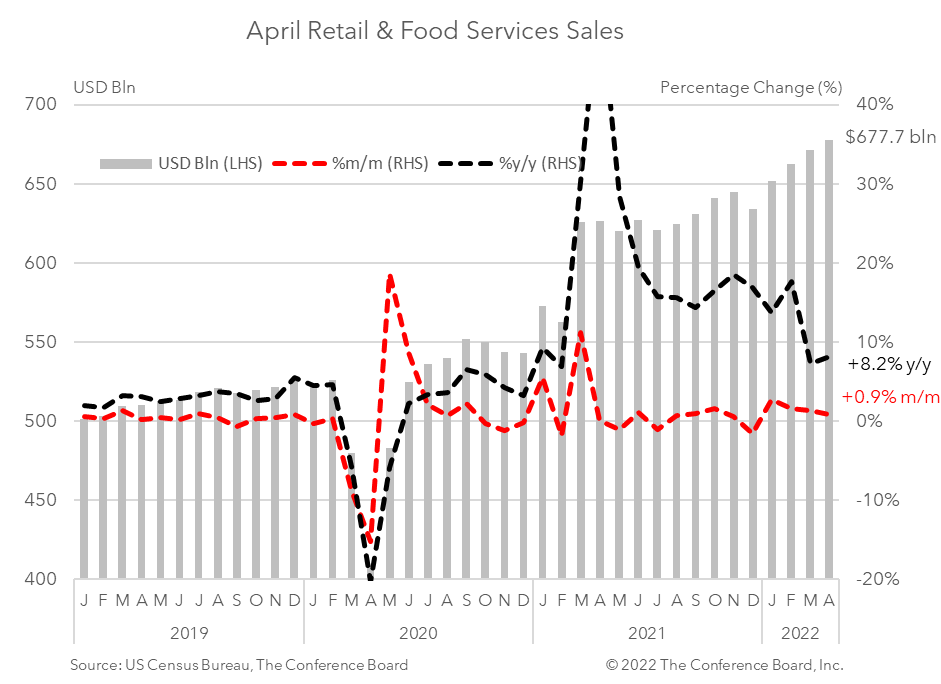April retail sales continued to expand despite headwinds
17 May. 2022 | Comments (0)
The latest retail sales data show an economy that still has momentum despite headwinds from high inflation and rising interest rates. Retail spending rose by $6.0 billion to $677.7 billion in April — up 0.9 percent from the previous month and up 8.2 percent from a year earlier. Adjusted for CPI inflation, which remained near a 40 year high in April, sales were up 0.6 percent month-over-month.
Spending at food services and drinking places was the primary driver of growth in April—rising 2.0 percent from the previous month. Low COVID-19 cases bolstered consumers’ willingness to reengage in-person services despite rising prices. Looking forward, we expect spending at food service and drinking places to continue to strengthen over the coming months.
Meanwhile, demand for goods rose more modestly than services in April— rising just 0.7 percent from the previous month. Spending on motor vehicles and parts rose 2.2 percent in April from March while retail sales excluding motor vehicles and parts rose by 0.3 percent month-over-month. Spending at gasoline stations fell 2.7 percent for the month as crude oil prices declined from a spike in March. Retail sales less motor vehicles, gasoline, and building supplies (known as “Retail Control”) were up 1.0 percent from the previous month. Spending at non-store retailers rose 2.1 percent in April.
We expect consumer spending growth to continue to pivot toward in-person services as worries about COVID-19 abate. However, this may squeeze out some spending on goods. Additionally, we anticipate that high inflation—driven by rising energy and food prices related to the Ukraine Crisis and renewed supply chain disruptions in China — may erode much of these gains in real terms. Rising interest rates related to Fed tightening will also erode spending growth. We expect real consumer spending to slow from 7.9 percent year-over-year in 2021 to 2.7 percent in 2022.
Given the current economic momentum we expect GDP to expand by 2.3 percent this year. However, the risk of recession continues to loom in late 2022 and 2023 due to continued geopolitical uncertainty, renewed supply chain disruptions associated with COVID-19 lockdowns in China, and the Fed’s ability to facilitate a soft landing.

-
About the Author:Erik Lundh
Erik Lundh is Senior Global Economist for The Conference Board Economy, Strategy & Finance Center, where he focuses on monitoring global economic developments and overseeing the organization&rsquo…




0 Comment Comment Policy